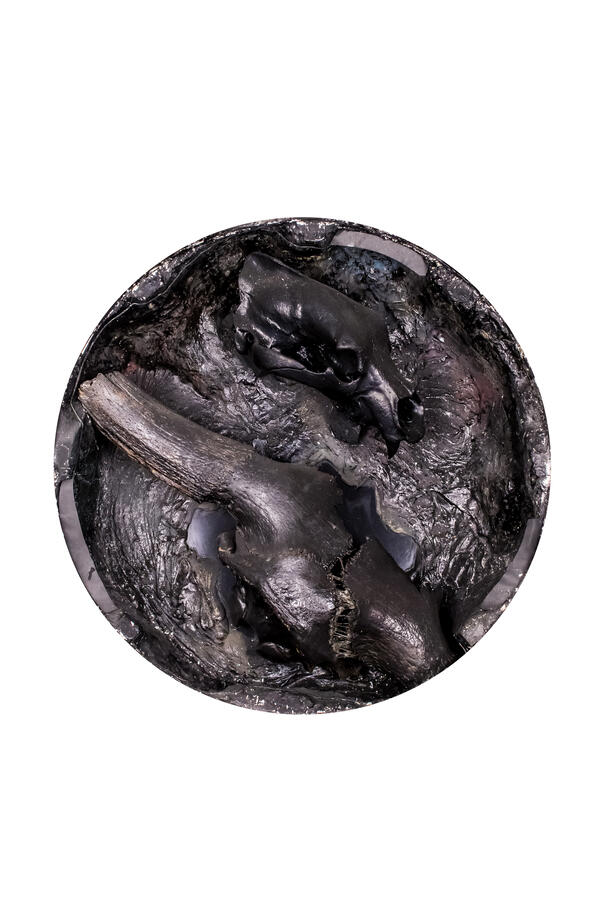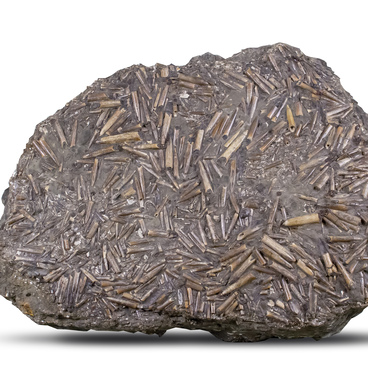Natural bitumen or asphalt is a solid or viscous substance based on a hydrocarbon. It is usually formed in the process of chemical oxidation or tectonic changes in the places where oil deposits are located. Sometimes underground bitumen comes to the surface and forms large areas of natural asphalt. They are called asphalt lakes. The largest ones are located in Trinidad and Tobago, the United States, Venezuela, and Azerbaijan.
A small asphalt lake was formed about 500 thousand years ago on the territory of modern Tatarstan — near the village of Nizhnyaya Karmalka, the Cheremshansky district. Its surface was uneven; the bitumen drips formed small wrinkles in which rainwater accumulated. Some parts of the lake were probably covered with vegetation back then.
In the middle of the 20th century, paleontological excavations took place near Nizhnyaya Karmalka. Scientists extracted numerous remains of animals and plants from the asphalt lake that existed on Earth about half a million years ago. Because of the embalming properties of bitumen, all of them were well preserved. Large herbivorous animals probably mistook the shiny surface of the lake for a pond, tried to drink that water or swim in it, but instead were caught in the resin. They became easy prey, which attracted large and small predators or scavenging birds, who also died in the bitumen.
In total, at different times, paleontologists found the remains of more than 400 animals of different species in the lake. That allowed to determine that flora and fauna of the ancient Kama region resembled the modern steppe plains in the south of Western Siberia. More than that, scientists found fragments of beetles in tar, typical of the steppes of Central Asia.
Now the asphalt lake in the Cheremshansky district is concealed under a layer of later sediments. However, natural tar sometimes comes to the surface. It is especially common in sandstones along the banks of the Sheshma River. Bitumen is extracted as a mineral resource and used in the production of construction materials, lacquers, and paints. It is also useful as a raw material for synthetic oil, which is an alternative to natural fuels.
A small asphalt lake was formed about 500 thousand years ago on the territory of modern Tatarstan — near the village of Nizhnyaya Karmalka, the Cheremshansky district. Its surface was uneven; the bitumen drips formed small wrinkles in which rainwater accumulated. Some parts of the lake were probably covered with vegetation back then.
In the middle of the 20th century, paleontological excavations took place near Nizhnyaya Karmalka. Scientists extracted numerous remains of animals and plants from the asphalt lake that existed on Earth about half a million years ago. Because of the embalming properties of bitumen, all of them were well preserved. Large herbivorous animals probably mistook the shiny surface of the lake for a pond, tried to drink that water or swim in it, but instead were caught in the resin. They became easy prey, which attracted large and small predators or scavenging birds, who also died in the bitumen.
In total, at different times, paleontologists found the remains of more than 400 animals of different species in the lake. That allowed to determine that flora and fauna of the ancient Kama region resembled the modern steppe plains in the south of Western Siberia. More than that, scientists found fragments of beetles in tar, typical of the steppes of Central Asia.
Now the asphalt lake in the Cheremshansky district is concealed under a layer of later sediments. However, natural tar sometimes comes to the surface. It is especially common in sandstones along the banks of the Sheshma River. Bitumen is extracted as a mineral resource and used in the production of construction materials, lacquers, and paints. It is also useful as a raw material for synthetic oil, which is an alternative to natural fuels.



